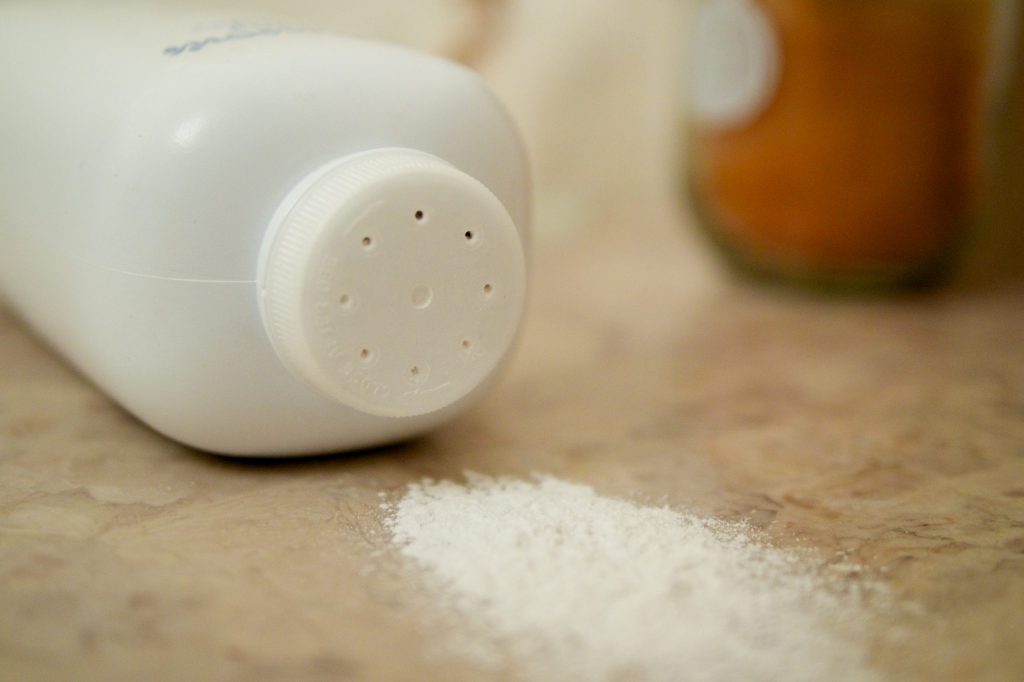Once the mainstay for personal hygiene, baby and elder care, talcum powder has become widely reported and disputed as a possible carcinogen, particularly for women’s reproductive cancers. Leading manufacturer of the most globally recognized brand of “Baby Powder” by Johnson and Johnson® and others have been named in various class action suits, linking use of the brands’ talcum powder and the development of breast, ovarian, and cervical cancers.
Cancer caused by talcum powder has been disputed in court, but a recent legal settlement in the United States and class action suits pending against Johnson and Johnson® seem to confirm that there may be a strong link between the product and an increased risk of cancer. We will review what you need to know about talcum, why imported non-name brands are not recommended, and what to do if you suspect that your health was negatively impacted by the powder products.
The Johnson & Johnson® Lawsuit
In February of 2016, Johnson & Johnson was ordered by a Missouri court to pay $72 million dollars in damages to the next of kin of a woman who died from ovarian cancer. The family was awarded $10 million dollars in primary damages and $62 million in punitive damage, according to court records, after the suit alleged that her use of Johnson’s Baby Powder™ for more than twenty years contributed to her cancer and loss of life.
Jurors in the case stated that, based on research and evidence which they felt was suppressed from the public by Johnson & Johnson, that the company had deliberately and negligently provided the product and advertising on daily use without warning consumers about the potential risk factors. In other cases where the cosmetic brand has been cited for legal liability, many female plaintiffs alleged that they believed it was safe to use the baby powder product on their genitals to maintain “freshness and dryness” as well as odor relief.
In another case, a South Dakota woman turned down a $1.3 million out-of-court settlement with Johnson & Johnson. Terms of the settlement included a confidentiality clause, where Deane Berg would have been required to suppress her medical record and the findings that linked her ovarian cancer to the Johnson & Johnson brand of baby powder. Berg’s case preceded the $72 million-dollar award in Missouri, and has paved the way for numerous other lawsuits against Johnson & Johnson.
While the manufacturer indicates that the talcum based powder does not contain arsenic and has argued that it did not direct women to use the power excessively around reproductive areas, some of the slogans used for advertising directly to women contradict the defense. Female consumers were encouraged to use the product inside undergarments, and under the arms and breasts to reduce perspiration and body odor. However, several clinical independent studies discuss an increased risk of cancer with talc powder use, as chemicals and heavy metals within the talcum powder may be easily absorbed into the female reproductive system.
The discussion about the inherent health hazards of talc are not new. In 1971, a clinical study reported that in 75 percent of ovarian tumors, talc was imbedded in the tissue. Sources indicate that there may be as many as 1,500 new legal cases pending against Johnson & Johnson for reproductive cancer, allegedly caused by long-term personal use of the baby powder product.
What is Talcum Powder Made From?
The base of talcum powder is a harmless clay compound, but the manufacturing of the product adds additional chemicals that may increase cancer risk, per some studies. The clay mineral is composed of hydrated magnesium silicate, blended with corn starch. One type of mineral rock that contains a high level of talc is soapstone.
The talc can be bleached, as it is mined naturally in colors that range from white to green and is not water soluble, which is why it was valued for use in infant diapers, in care of the elderly (to avoid rashes and heat spots), and for deodorant use for dryness.
Products That May Contain Talcum Powder
Unknown to many consumers, talc is present in a high number of products that are used on a daily basis, where products require durability or hardening against moisture damage. Talc is a primary component in:
- Paper
- Plastic coatings and rubber
- Interior and exterior paint
- Cosmetics (including primers, deodorant, and facial powders)
- Crayons
- Soap
- Commercial table tops
- Chalk
The defense of the legal team at Johnson & Johnson acknowledges in part that exposure to talc may come from a variety of different sources. The company assures that products are consistently tested to ensure that there is no trace of asbestos within the talcum powder they distribute. Despite advertising by leading manufacturers, the American Academy of Pediatrics has advised against using baby powder for diaper dryness or rash since 1969.
The International Agency for Research on Cancer reports that perineal (i.e., genital area) use of talc or talcum-based products ‘may’ pose a carcinogenic risk. Currently, researchers and health professionals are closing the information gap when it comes to health risks associated with talc. It may be safe for other consumer products, but not safe for daily prolonged use in sensitive body areas or for cosmetic use where it may be absorbed and inhaled as particulates.
What we learned too late about talcum powder in general is that following suggested use directions from manufacturers may be placing our personal health in jeopardy. No product should be able to advise daily use to achieve a result without knowing how it may impact an individual consumer who may have other risk factors.
If you have a question about a product you use every day, research health complaints and studies to ensure that you are not placing yourself at a higher risk of developing cancer. Consumers should also consult with their primary care physician to discuss possible interactions and other risk factors.
